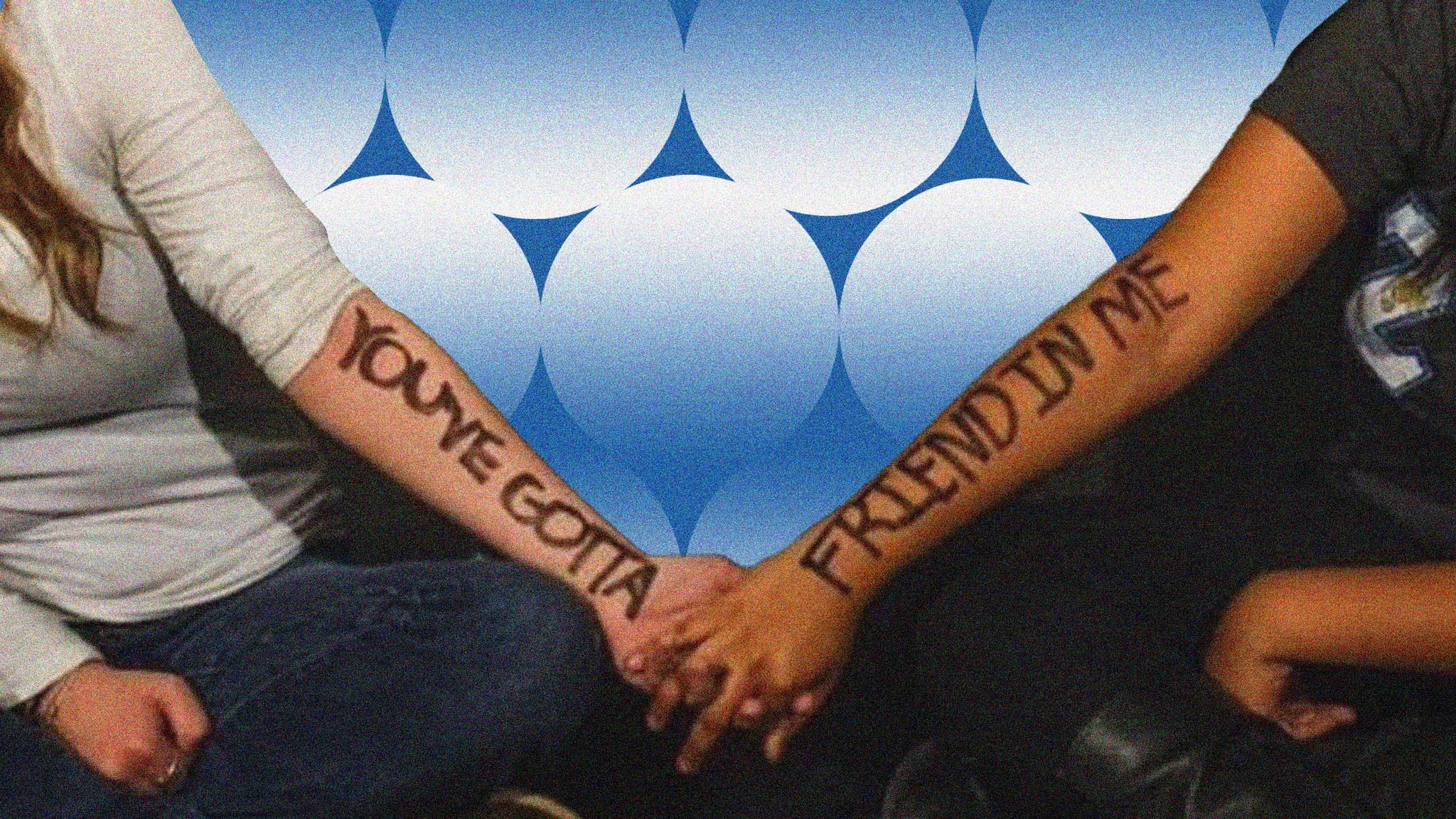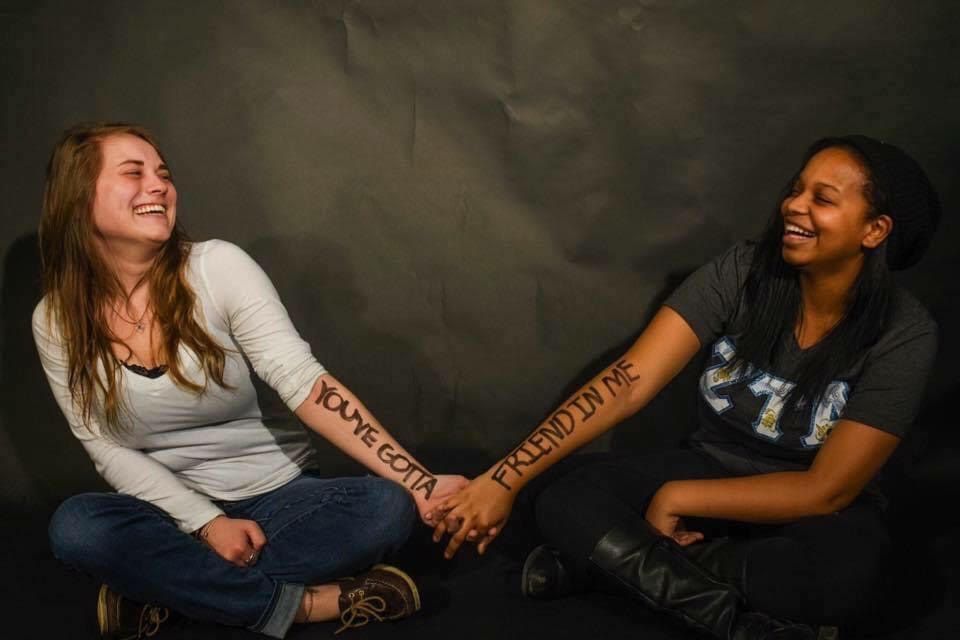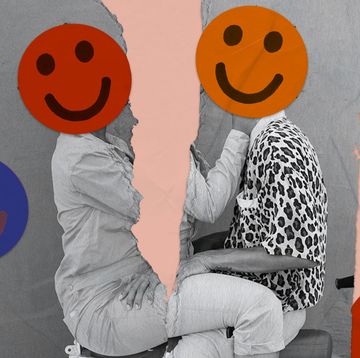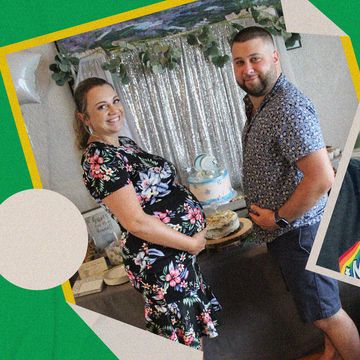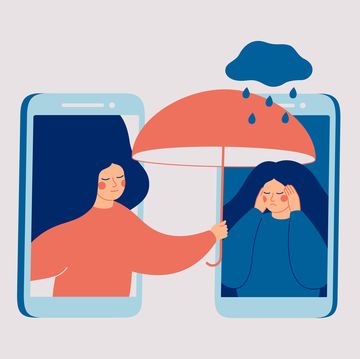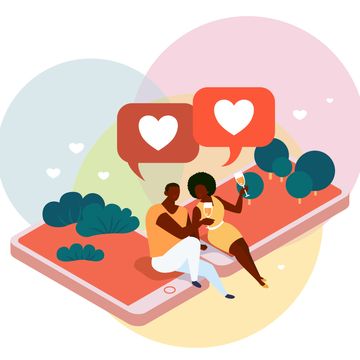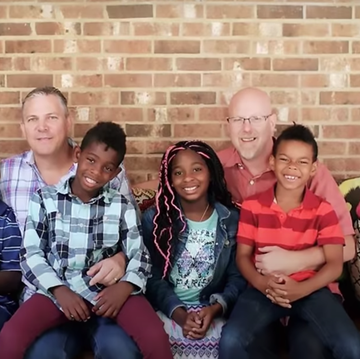Friendships are love stories too. In the Shondaland series The Art of Friendship, we explore and appreciate the beauty and complexities of friendship, as well as what makes it so powerful. From expert tips on how to build friendships and navigate conflicts to uplifting moments of connection, these stories are reminders of the joy, value, and meaning that companionship brings to our lives.
When Morgan Galvin moved to Charlotte, North Carolina, she could count on one hand the number of people she knew in the city. They were mostly loose acquaintances from past lives in other cities, none close enough to comfortably plop down and watch a movie with or laugh about inside jokes together.
Following Galvin’s move to the Queen City, an old friend messaged her about a TikTok user named Katey Shehan who also resides in Charlotte. She told Galvin that Shehan makes videos offering advice to the city’s newcomers as someone who grew up in the area; she recommended watching a few. Galvin took her up on the offer.
As a military brat, Galvin is used to shuffling up and down the East Coast and is no stranger to building new bonds as she goes. She’s found that as an adult, though, it’s much harder to make new friends for a variety of reasons, from shifting interests to different life stages. Being a 20-something living in a neighborhood brimming with budding families, she found it even more difficult to find friends her age in her new town.
That changed when Shehan made a video inviting her new-to-Charlotte followers to message her and say hello. Galvin did and got a response back from Shehan saying that she was hosting a gathering at a local brewery for a group of girls who had recently moved to the booming hub. Galvin went back and forth in her head about meeting a group of strangers by herself. A gut feeling told her to go anyway.
When Galvin arrived, she gulped when she saw Shehan swivel out of the car in front of her. Galvin screamed Shehan’s name out of her car window in the packed parking lot before she could think through how she’d be perceived by someone she’d never met. To her surprise, Shehan smiled and hopped in the car with Galvin before she could think it through either.
“I didn’t even have time to unlock the door, and she basically crawled through my window,” Galvin recalls with a laugh. “She was like, ‘Hey, I’m Katey. You’re Morgan, right?’” Shehan then offered to ride around with Galvin until they found a parking spot. “She was immediately such a friend.”
Around 40 girls showed up that day to chat about their time in the city and find new buddies. As far as Galvin and Shehan, their bond was instant. “People asked us if we knew each other already,” Galvin says. Serotonin levels high from their magnetic conversations, Galvin debated reaching out to Shehan afterwards but feared she’d come off as a “fangirl.” Shehan went home that night and told her boyfriend that she found her “twin flame” in Galvin.
After a text from Shehan expressing the sentiment, they began deepening their friendship: meeting up for coffee, going out on weekends together, and sending each other texts in between their hangouts. They don’t get put off by communication lapses, where Galvin says her other adult friendships have struggled, but they make a conscious effort to remain in continual contact. Now, Galvin has someone in Charlotte to comfortably plop down and watch a movie with and laugh about inside jokes. (Theirs, of course, is about hopping in the car with a complete stranger.)
When we hear the phrase “good friend,” there’s often an assumption that the person has been a friend since grade school or college. The truth of the matter is that you can become close with someone new to your life like Galvin and Shehan did. The key to building that connection is effort.
“We have to apply the same mindset for dating to friendship,” says friendship coach and licensed educator Danielle Bayard Jackson. “If you think about it, what’s the goal of dating? You want to get to know this person, be close to them, learn more about them. You’re so curious. It’s the same thing.”
This was the case for Morgan Green and her best friend, Kim Landry. “My best friend literally walked up to me in a bar and asked if we could be friends, and we’ve been obsessed with each other since,” Green says. The pair ran in the same social circles at Susquehanna University but didn’t officially meet until their junior year. Following their introduction, they hung out every day, once a day, for a week straight.
Green says doing so was the most real and raw way she’s gotten to know somebody in such a short amount of time. “The more things that we told each other,” Green says, “the closer we got. It stopped being about simple things like ‘What’s your favorite color?’ and started being about … things you don’t tell people because you expect it would push them away or make them not want to talk to you. It brought out something deeper in us.”
While Galvin and Shehan experienced immediate connections, Green and Landry’s friendship solidified over a period of time. “It’s not going to happen through responding to each other’s Instagram stories,” Jackson says. The sooner you wrap your mind around the fact that you have to be intentional about growing a friendship, Jackson says, the better.
A study by University of Kansas researcher Jeffrey Hall found that it takes about 50 hours of time together to go from acquaintances to casual friends, 90 hours to become good friends, and more than 200 hours to obtain “close” or “best” friend status. Shari Leid, a lawyer turned life coach and the author of The 50/50 Friendship Flow and Make Your Mess Your Message, says, “Recognizing it takes time to click into it shouldn’t be discouraging, but it should help you understand what it takes.”
Jackson jokes that she often wonders how much more purposeful we would be about forging friendship-building time if we could see it as a time stamp or ticking clock on each other’s foreheads. “That imagery is helpful to see,” she says. “Like, ‘Oh, gosh, if that’s the case and it takes 90 hours to feel like you’re a close friend of mine, what am I doing to get us there?’”
It can be hard to carve out time or take it slow when you’re craving a close connection or über-excited about getting to know somebody who strikes you as super-cool. But as the saying goes, Rome wasn’t built in a day. Neither are the most cherished bonds. Not every single connection will take off, but the ones that do all start somewhere.
Rewrite your beliefs
If you’ve ever wondered why it’s so hard for new friendships to take off, it could be because you’ve unintentionally developed a mindset of rejection. “[It] makes it hard for us to feel comfortable approaching someone because we feel like we’re going to get rejected,” Jackson says, “or they won’t like us or that we don’t have anything interesting to offer or say.”
When Leid was writing her first book on friendship, she found that it wasn’t that people didn’t want to be written about; they were fearful they weren’t interesting enough. “Our belief system has to support our goals,” she says. “If our belief system is ‘I’m not good at making friends,’ then we need to check that. Why do we believe that? Because we were rejected in second grade? Well, is that true today? No.”
Whether you’re an introvert or extrovert, shy or outgoing, the most powerful tool you can have in your tool box is knowing who you are as a friend and believing in the value you bring to a relationship.
Get together one-on-one
Group hangouts are lively spaces that are perfect for meeting people, but if you want to deepen a specific connection and have a richer quality of conversation, lean into the power of the one-on-one meeting. Asking to spend intentional time together, whether over a coffee walk or a shared meal, is a wonderful first step in showing you care about someone and want to build your relationship.
You can let the conversation grow organically or come prepared with a few topics of conversation. “Maybe it’s that you’re going to tell them what you’ve learned from them,” Leid says, “or maybe it’s a question that you want to ask.” A 2017 Journal of Personality and Social Psychology paper found that people who ask more questions — especially follow-up questions — are better liked by their conversation partners. There’s a great chance you’ll learn something about that person that you didn’t know before.
Start shared experiences early
If you reflect on your favorite experiences with your current friends, it may come as no surprise that the more unique, spontaneous, or atypical gatherings and moments stand out the most. In fact, a 2014 study found that sharing an experience with another person nonverbally amplifies the experience. “Shared experiences are something that bonds people,” Jackson says. “We have to quite literally do things together to feel connected.” She suggests trying new restaurants, activities, or classes together.
Not only do shared experiences bond you more quickly, but they also erase what can sometimes feel like awkward pressure to keep a conversation going and automatically give you subject matter to talk about. Whether it’s an afternoon of goat yoga or chowing down on a cuisine you’ve never tried, finding creative ways to be together can cement your connection and create lasting memories — or maybe an inside joke.
Open up your home (and your heart)
Intimacy is a crucial pillar in any friendship, and welcoming someone into your world — either emotionally or physically — is one small way to do so. After meeting in a public space once or twice, you can infuse additional intimacy into your new bond by inviting someone over for a meal, a game night, or a few cocktails outdoors. “There’s something very special about that,” Leid says about having a friend in your home for the first time. “That’s part of your identity.”
Be reliable
“Friendships take time because you have to build trust,” Leid says. Trust is another foundational building block in a friendship, and you can build it early on in your relationship by following through on your word, no matter how small the scenario may seem.
“A lot of times, friendships are broken when somebody is not reliable,” Leid adds. It’s important to respect your new friend’s time, as you never know what the other person has going on any given day. Arriving at the scheduled time — and even returning phone calls or responding to texts in a timely manner — shows that you are dependable and that you care.
Utilize time between hangouts
The margins of time between in-person meetups can be just as fruitful as a face-to-face commitment when growing a new friendship. Fight the “out of sight, out of mind” mentality by showing thoughtfulness via text, phone, or — heck — dropping a surprise box of their favorite goodies at their doorstep. Simple acts signal that you want to keep the friendship going.
“If I meet somebody for the first time, and we have a great conversation, and she mentions a podcast she loves or a certain show, I should be doing things between our hangouts to let her know she’s top of mind,” Jackson says. Everyone enjoys feeling thought of; in fact, it’s a foundational feeling for good friendship, so if you come across something you know they’re interested in, such as a new song from an artist they adore, send them a link and let them know that you are thinking of them.
Understand that momentum is key
In school and at work, the opportunity to see or talk to a person every day is a built-in advantage for a budding friendship, a social infrastructure that we don’t receive otherwise. While it might not be possible to see your friend-to-be every day, there are other ways you can mirror that natural momentum when you want to take your bond to the next level.
Suggest signing up for a regularly scheduled event together, such as a weekly fitness class, a monthly book-club meeting, or a recurring volunteer slot. “Go at the same time, all the time,” Leid says. “If your goal is to establish a friendship, the whole idea is that it takes time. The more contact you have over a period of time is how a friendship slowly builds.”
Mia Brabham is a staff writer at Shondaland. Follow her on Twitter @hotmessmia.
Get Shondaland directly in your inbox: SUBSCRIBE TODAY
